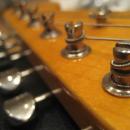alguien me puede ayudar, cua es la diferencia entre estos dos efectos....
¿Cuál es la diferencia entre el pedal tremolo vs vibrato?
 Baneado
Baneado OFERTAS Ver todas
-
-13%PRS SE Silver Sky Piano Black
-
-10%Epiphone Les Paul 59 Tobacco Burst
-
-16%Fender Ltd AM Pro II Strat HH

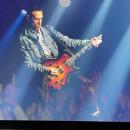
Son el mismo efecto.
Una empresa le llamó vibrato y la otra trémolo (para distinguir del vibrato o trémolo de la palanca de la guitarra, que también tenían los nombres cambiado según la marca).
Total, piensa que es una desconexión del sonido de la guitarra, con el tempo y el fade controlable (más rápido o más lento el tempo, más profundo y rápido el fade-reducción de sonido-). Luego ya, llámalo como te dé la gana.
Una empresa le llamó vibrato y la otra trémolo (para distinguir del vibrato o trémolo de la palanca de la guitarra, que también tenían los nombres cambiado según la marca).
Total, piensa que es una desconexión del sonido de la guitarra, con el tempo y el fade controlable (más rápido o más lento el tempo, más profundo y rápido el fade-reducción de sonido-). Luego ya, llámalo como te dé la gana.
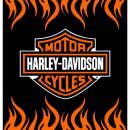
A ver si sé explicarlo bien, que tambien me costó un poco entenderlo en su dia.
Vibrato es una leve variación en la afinación que se puede conseguir con los dedos en el diapason, con un pedal que haga el efecto o con la "mal" llamada palanca de trémolo,ya que el efecto que se consigue con la palanca es un vibrato no un trémolo.
Trémolo es una variación en el volumen y se puede conseguir con un pedal que haga el efecto, con el propio volumen de la guitarra abriendolo y cerrandolo rapidamente o con un pedal de volumen p. ej.
O sea que ambos pedales actuan igual haciendo una variación mas o menos rápida, pero el trémolo sobre el volumen y el vibrato sobre la afinación.
Vibrato es una leve variación en la afinación que se puede conseguir con los dedos en el diapason, con un pedal que haga el efecto o con la "mal" llamada palanca de trémolo,ya que el efecto que se consigue con la palanca es un vibrato no un trémolo.
Trémolo es una variación en el volumen y se puede conseguir con un pedal que haga el efecto, con el propio volumen de la guitarra abriendolo y cerrandolo rapidamente o con un pedal de volumen p. ej.
O sea que ambos pedales actuan igual haciendo una variación mas o menos rápida, pero el trémolo sobre el volumen y el vibrato sobre la afinación.
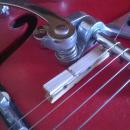


La introducción en el efecto de una cierta variación de la afinación yo la describiría casi como chorus.
En todo caso, sobre vibrato/trémolo hay discusiones hace tiempo.
http://en.wikipedia.org/wiki/Vibrato_unit#Vibrato_or_tremolo.3F
Vibrato or tremolo?
The term "vibrato unit" was introduced on high-end Fender guitar amplifiers in the 1950s, starting with the Vibrolux amplifier in 1956, in the same period in which what is now called a "tremolo arm" was introduced on Fender guitars.
The "synchronised tremolo" was introduced in 1954 on the first Stratocaster guitar. The only previously successful "tremolo arm" was the Bigsby vibrato tailpiece, often simply called a "Bigsby". In 1958, Fender reinforced his usage with the "Fender floating tremolo" on the Jazzmaster and some subsequent guitars. The "synchronised tremolo" became the most copied of these three basic patterns of "tremolo arm", although both of the others continue to have some following.
In both the case of the "tremolo arm" and "vibrato unit", Leo Fender had reversed the established usage of the terms vibrato and tremolo. That is, he called a device that produced true vibrato a "synchronised tremolo", and a device that produced true tremolo a "vibrato unit". In fact he was using the terms interchangeably. The first Fender vibrato unit (1954) was called "tremolo", and some later Fender tremolo arms were called "vibrato tailpieces" or similar.
But the terms that became established were "tremolo arm" and "vibrato unit", both contrary to standard usage, with the result that electric guitarists traditionally use the terms "vibrato" and "tremolo" in the opposite senses to all other musicians when describing these hardware devices and the effects they produce. From time to time it is proposed that this should be corrected, and the term "tremolo arm" rejected in favor either of "vibrato arm" or of a neutral term such as "whammy bar", but there is no corresponding "correct" term for a vibrato unit.
The task of producing a similarly "correct" term for a traditional vibrato unit is slightly complicated by two factors:
The subsequent development of other guitar effects units such as chorus effects, phasers (sometimes called phase vibrato units) and flangers, which can be set to produce changes in pitch similar to traditional vibrato as understood by most musicians.
The fact that, under harmonic analysis and contrary to the expectations of many musicians, the output of the original vibrato unit does contain other frequencies near that of the note frequencies and in place of the note frequencies.[citation needed] These are the mathematical result of the variation in volume of the notes.
En todo caso, sobre vibrato/trémolo hay discusiones hace tiempo.
http://en.wikipedia.org/wiki/Vibrato_unit#Vibrato_or_tremolo.3F
Vibrato or tremolo?
The term "vibrato unit" was introduced on high-end Fender guitar amplifiers in the 1950s, starting with the Vibrolux amplifier in 1956, in the same period in which what is now called a "tremolo arm" was introduced on Fender guitars.
The "synchronised tremolo" was introduced in 1954 on the first Stratocaster guitar. The only previously successful "tremolo arm" was the Bigsby vibrato tailpiece, often simply called a "Bigsby". In 1958, Fender reinforced his usage with the "Fender floating tremolo" on the Jazzmaster and some subsequent guitars. The "synchronised tremolo" became the most copied of these three basic patterns of "tremolo arm", although both of the others continue to have some following.
In both the case of the "tremolo arm" and "vibrato unit", Leo Fender had reversed the established usage of the terms vibrato and tremolo. That is, he called a device that produced true vibrato a "synchronised tremolo", and a device that produced true tremolo a "vibrato unit". In fact he was using the terms interchangeably. The first Fender vibrato unit (1954) was called "tremolo", and some later Fender tremolo arms were called "vibrato tailpieces" or similar.
But the terms that became established were "tremolo arm" and "vibrato unit", both contrary to standard usage, with the result that electric guitarists traditionally use the terms "vibrato" and "tremolo" in the opposite senses to all other musicians when describing these hardware devices and the effects they produce. From time to time it is proposed that this should be corrected, and the term "tremolo arm" rejected in favor either of "vibrato arm" or of a neutral term such as "whammy bar", but there is no corresponding "correct" term for a vibrato unit.
The task of producing a similarly "correct" term for a traditional vibrato unit is slightly complicated by two factors:
The subsequent development of other guitar effects units such as chorus effects, phasers (sometimes called phase vibrato units) and flangers, which can be set to produce changes in pitch similar to traditional vibrato as understood by most musicians.
The fact that, under harmonic analysis and contrary to the expectations of many musicians, the output of the original vibrato unit does contain other frequencies near that of the note frequencies and in place of the note frequencies.[citation needed] These are the mathematical result of the variation in volume of the notes.


eduardoritos escribió:hace 4 horas
La introducción en el efecto de una cierta variación de la afinación yo la describiría casi como chorus.
A mi entender, el chorus es lo que dices, pero se diferenciaría del vibrato en que el efecto chorus mantiene invariable una parte de la señal original.
O sea, el vibrato es lo que suena cuando le das a la palanca de la guitarra, el tremolo cuando por algún procedimiento subes y bajas el volumen más o menos rapidamente, y el chorus es un efecto que añade a la señal original el efecto vibrato
A ver si alguien nos puede iluminar al respecto

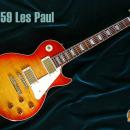
Hilos similares
Nuevo post
Regístrate o identifícate para poder postear en este hilo


